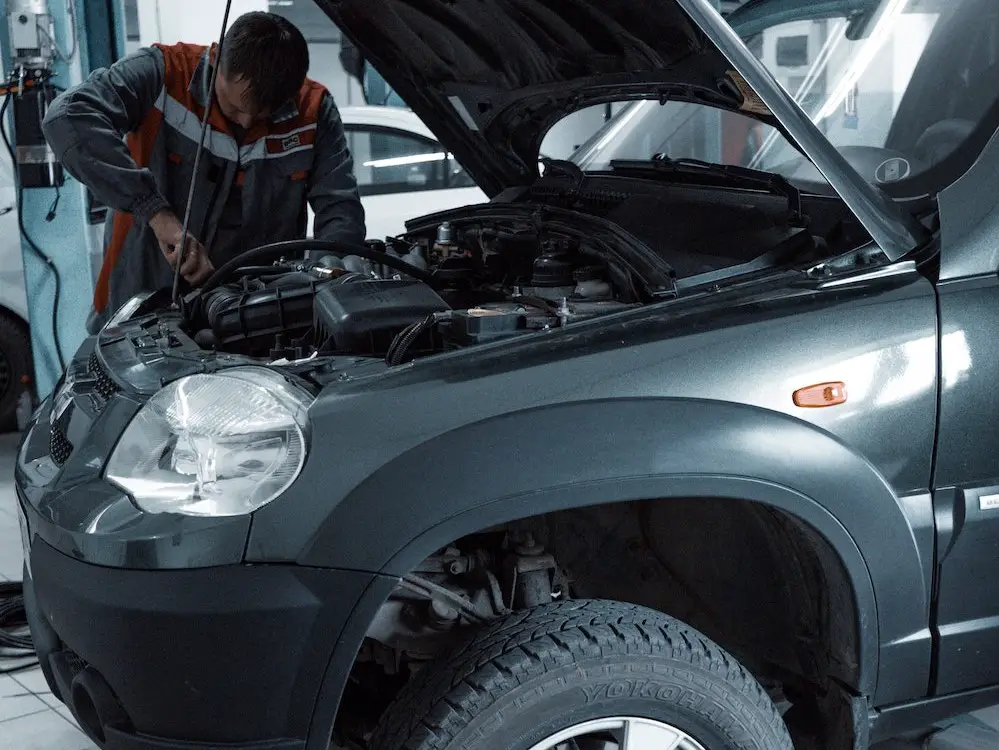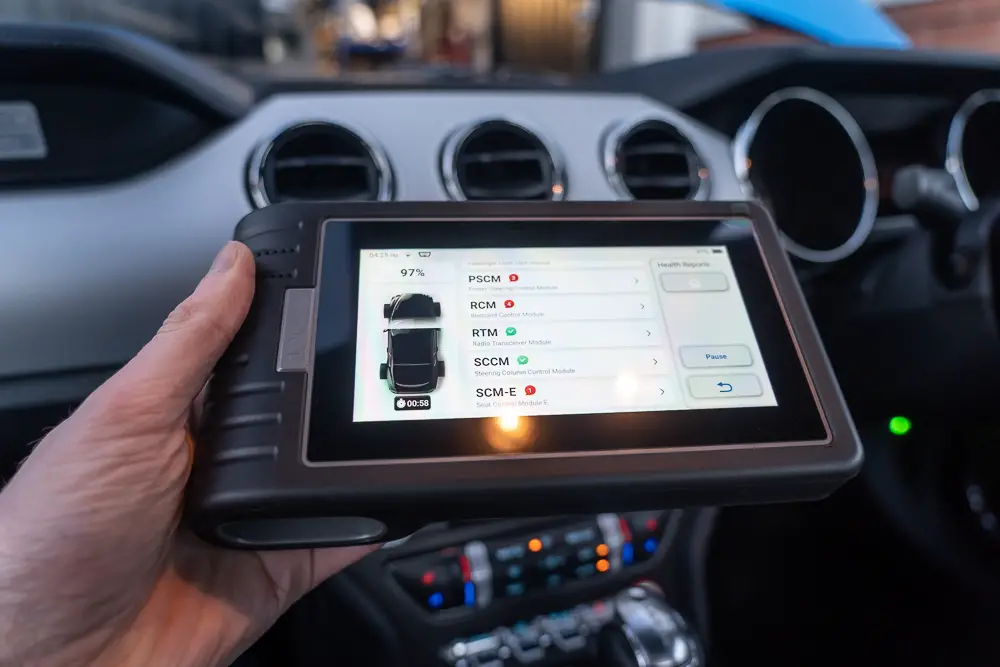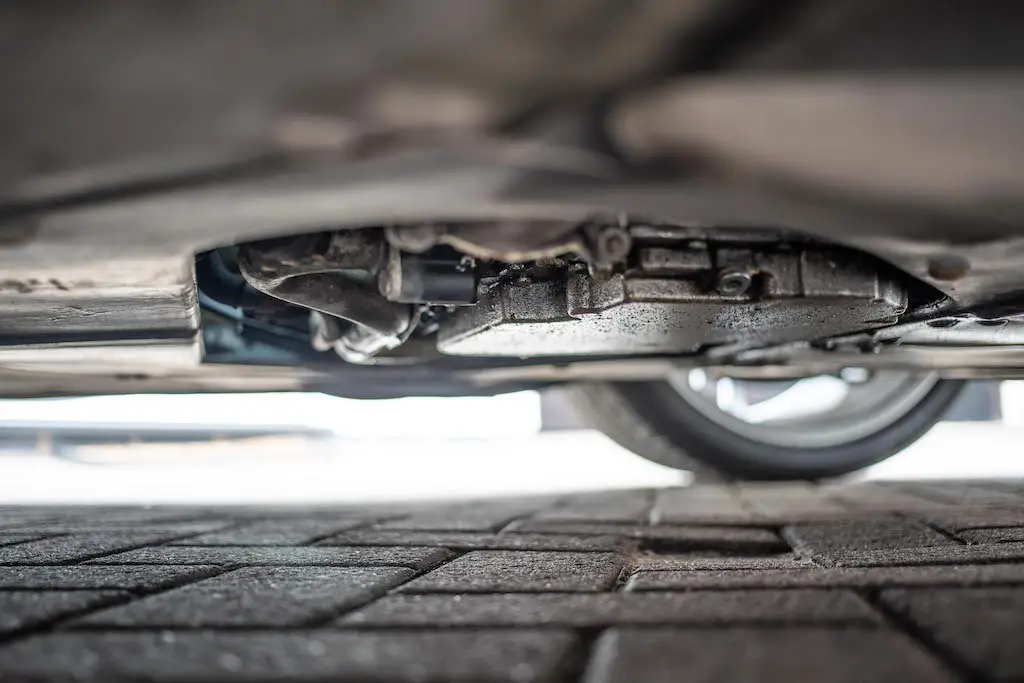The Chevy Trax is a fantastic vehicle with a lot of characteristics that make it a wonderful option as a first vehicle. Since the debut of the initial model in 2015, numerous further versions have been released. Here, we’ll focus on the 2016 Chevy Trax problems.
Before making your purchase, you should be aware of a few frequent issues that owners have mentioned concerning the 2016 Chevy Trax problems.
- 2016 Chevy Trax
- Chevy Trax Reliability
- Chevrolet Trax Problems
- Trax Transmission Problems
- Frequently Asked Questions
2016 Chevy Trax
View this post on Instagram
The Buick Encore and the 2016 Chevrolet Trax share the same platform and are GM’s smallest crossovers. Although the architecture of the Chevrolet Sonic serves as the foundation for both the Encore and Trax, the Encore is unmistakably more upmarket.
Chevrolet worked on enhancing the Trax’s crash structure for a time before it was finally released in the United States. This subcompact utility is impressive in the crash tests, so it was worthwhile. With ESC, rearview camera, as well as 10 airbags all standard, the list of safety equipment is remarkable as well.
1. Styling
The 2016 Chevy is a compact crossover that borrows design elements from the Chevrolet crossovers and wraps them in a subcompact body. However, the overall impact is very standardized.
The Chevrolet Trax, as well as the Buick Encore, are two of General Motors’ newest subcompact utility vehicles, both of which are built on the subcompact Sonic’s platform.
Additionally, the Buick’s front doors are more visually flamboyant than those of the Trax and Encore, which only share a single door.
Manufacturers chose to take things easy with the Chevy offering in comparison to more obviously styled rivals like the Mini Countryman, Jeep Renegade, as well as Nissan Juke.
The LS Base model is equipped with steel wheels and plastic wheel coverings because it is designed for car buyers on a tight budget.
The LTZ and LT variants, which come with 16 or 18-inch alloy wheels, respectively, are the only ones for buyers opting for larger, more expensive wheels.
The lack of roof rails, which are a regular feature on all the other trims, and brightwork along the sides of base models contribute to their cheap appearance. However, the rear license plate surround and mirror trim on the base LS model is body-colored.
The Trax features the corporate dual cockpit styling of Chevrolet, albeit with a practical, upright, utilitarian layout and gauges that are nearly identical to those of the Sonic. The 3.5-inch screen, which shows a numerical speedometer that is along with other important vehicle information and the warning lights, is set next to a tachometer on that instrument panel.
2. Performance
Only modest power is provided by the tiny turbocharged engine, and the handling is adequate but unremarkable. No matter the trim, the 2016 Trax only has one engine available for propulsion in the United States: a four-cylinder 1.4-liter engine with 138 horsepower as well as 148 lb-ft of torque.
With the help of a six-speed automatic transmission, power can be distributed in the front or even on all four wheels. Maximum torque is available from 1,850 revolutions per minute up to 4,900 revolutions, allowing for strong acceleration in town without taxing the little four-cylinder engine.
Also deserving of praise is Chevrolet’s $1,500 option with all-wheel-drive, which you add to any of the model’s trim levels and is available for the Trax. Some automakers offer all-wheel-drive only on the more expensive models.
In comparison to the all-wheel-drive Trax, their front-wheel-drive model rides lower roughly by half an inch. Moreover, on the bottom side is the air dam.
The FWD variant outperforms the AWD Trax by 2 mpg thanks to both of these features. It also feels somewhat heavier and slower because of the 400-pound AWD running gear. Front-wheel-drive cars need 9.4 seconds to get to 60 miles per hour, while the AWD ones need only 0.3 seconds.
Note that the Trax’s AWD system isn’t intended for driving in the mountains. The Trax delivers all of the power available to the wheels at the front above 37 mph for better fuel efficiency until it detects wheel slip. Instead, the technology is designed to give superior all-weather traction without incurring a significant fuel economy cost.
3. Comfort & Quality
In this modest crossover, Chevrolet’s designers have worked hard to reduce wind as well as road noise. The engine idles quietly inside the cabin.
In order to reduce the amount of drivetrain vibration that enters the cabin as the vehicle comes to a halt, the transmission changes to neutral in a manner that is almost spooky.
The interior materials of the Trax, however, could have been considerably better. The Trax feels utilitarian and low-class since there aren’t many surfaces that are soft to the touch, which are few in number and do the bulk of the heavy work.
4. The Interior
Another ambiguous topic is interior space. Taller passengers and drivers are welcomed both in front and in the back of a vertically expansive greenhouse.
However, that area cannot be translated horizontally. Front passengers and the driver will be only a few inches apart. Passengers do not have access to the armrest that can flip downwards that the driver does. It’s made worse by the lack of padding in the center console, which reduces passengers’ options to pouting and crossing their arms.
Taller drivers will appreciate the manual adjustable base driver’s seat on base versions, which can be modified for height and rake.
The front seats also include lower cushions and tilt/telescoping steering. LTZ versions come standard with power adjustable front seats, although the front passengers and drivers must still manually recline back the seat using a small, elusive lever.
In the expanding subcompact crossover market, cargo space often comes middle of the pack. With the back seat up, the Trax offers 18.7 cu ft of room; when folded, it offers 48.4 cu ft. Compared to the Mini Countryman and Nissan Juke, there is more room. A Honda HR-V, in contrast, provides 23.2 cu ft behind the seats plus up to 57.6 cu ft also with the back seat folded.
5. Safety
Despite not having any of the active safety systems of today, the Chevy Trax 2016 model receives great safety ratings.
These modifications seem to have been successful because the NHTSA awarded the Trax the highest possible overall rating of five stars.
Additionally, it has earned Good ratings across the board from IIHS, including the challenging small overlap test. However, those results were sufficient for the Trax to get that honor in 2014.
Ten airbags are included in the list of standard safety equipment, featuring knee bags meant for the front passengers or thorax bags at the rear to help shield the ribs of the passengers in the back seat from a would-be side impact.
Rearview cameras, anti-lock brakes, and tire pressure monitors are all included as standard equipment.
6. Features
Chevrolet equips Chevy Trax with a few extra-cost options like a backup camera, a 7-inch touchscreen, and even 4G LTE to entice younger consumers.
16-inch wheels made from steel that has plastic wheel covers, 10 airbags, a rearview camera, air conditioning, keyless entry, power windows, mirrors, locks, and 4G LTE connectivity that has an inbuilt wi-fi, OnStar capability, as well as Chevy’s MyLink infotainment is all included in the LS trim. To access the digital functions of MyLink, you need a Bluetooth device, a USB port, and an auxiliary jack.
The LT trim, which is in the middle of the lineup, includes 16-inch wheels, a remote start, cruise control, roof rails, better cloth upholstery, and mirrors that are power adjustable. The LT has a lengthy options list for clients purchasing a la carte, allowing them to choose the things they value the most.
With the top-tier LTZ trim you get heated front seats, leatherette trim, an improved, Bose audio system with seven speakers, fog lights, a driver seat with six power adjustments (though the driver’s backrest angle can still be adjusted manually), a steering wheel wrapped in leather, rear park assist, and also an auto rearview mirror. A sunroof is the sole major upgrade available over LTZ features.
Chevy Trax Reliability
With a reliability rating of 4.0 out of 5, the Chevrolet Trax comes in at sixth place as far as subcompact SUVs go.
It has much lower ownership costs compared to the average nationally compared to the mean annual costs of repair at $488. Major repairs are rare for the Trax because of the typical severity of faults and their low frequency.
Chevy Trax Years To Avoid
You should steer clear of the following Trax model years because of different mechanical as well as various electrical issues:
Actually, both critics and customers liked the 2015 model. The Trax has a rating of 8.3 out of 10 overall by US News, which also named it the best affordable subcompact SUV for 2015.
With up to 154 NHTSA complaints but also 7 recalls, the 2015 model year is regrettably one of the ones with the most complaints.
The 2015 Trax’s propensity to tumble downhill is its biggest complaint from owners. According to a few accounts, the Trax reversed when stopping on slanted roadways.
Even on a moderately sloping road, one customer claimed that his Trax nearly overturned on the car in front. According to experts, there may be a transmission problem.
The defective A/C system in this Trax is another frequent problem. The air conditioning unexpectedly stopped working, according to several owners, and there was no hot or cold air.
Even while the problem isn’t too serious, it is nonetheless inconvenient and could cost $300 to fix.
2016 Chevrolet Trax
The Trax 2016 model is Chevy’s subcompact crossover’s worst model year, as per CarComplaints.com. This Trax came with several mechanical and electrical issues, receiving approximately 150 complaints by NHTSA thus resulting in 5 recalls.
The broken A/C system is the root of Trax’s reliability issues. Owners of the Trax complained about the broken air conditioning system with frustration.
A refrigerant leak, electrical faults with the climate control system, and a damaged air compressor are frequently the root causes of A/C troubles.
The 2016 Chevy Trax Problems also involve the cooling system and engine. Many owners complained that their engines failed as a result of the check engine light turning on.
According to several stories, the experience of losing power while on the roadway was horrifying. Undoubtedly, this is one of the worst years to buy a Chevy Trax.
2017 Chevrolet Trax
Although the 2017 Trax has fewer difficulties than the two models before it, it still has a number of them. Additionally, this model year’s low-quality cabin material plus weak engine didn’t impress critics as much. The 2017 Trax has three recalls and 130 NHTSA complaints, according to CarComplaints.com.
Once more, Trax’s AC system grabs attention, but not for the right reasons. Several reports claimed that Trax’s temperature system frequently malfunctions.
For some customers, in particular, the heater from 2017 has stopped working. Depending on the place you live, this issue can just moderately aggravate you or might even make you miserable.
According to another source, the Trax’s engine caught fire.
Even while this isn’t a common problem and it may just as easily be a fluke event, the possibility that the engine could catch fire is quite worrisome. One user’s report claims that their engine caught fire during an accident.
2018 Chevrolet Trax
By this time, Chevrolet had fixed some of the Trax’s biggest dependability issues. The 2018 Trax has only had 80 NHTSA complaints and two recalls, according to CarComplaints.com. When purchasing used, there are a few things to bear in mind.
According to a few accounts, the Trax had electrical problems that caused the engine as well as the infotainment system to go down.
One owner said that after losing power, their car stalled and they were unable to even switch on the danger lights. The complainants would just have to switch off and on the engine again to resolve the problem, but it keeps happening.
The 2018 Trax experienced suspension issues as well, which ultimately resulted in a recall. The Trax’s front suspension could have been improperly welded, based on the recall notice.
This increases the difficulty of steering the car and the likelihood of a collision.
2019 Chevrolet Trax
Critics gave the 2019 Trax release, which was unheralded, a mixed bag of feedback. This SUV is one of the worst models of the Chevy Trax to avoid due to a few electrical and mechanical concerns, a sluggish engine, and a subpar cabin.
The brakes on the 2019 Trax are a frequent source of complaints. One irate driver said that the brake line on the Trax had disconnected and that it was necessary to replace it. The fact that it occurred at about 7,500 miles added to the frustration of this problem.
In addition, the front suspension of the 2019 Trax was subject to a recall due to incorrect welding.
2016 Chevrolet Trax Problems
Chevy Trax owners have mentioned a few typical 2016 Chevy Trax Problems. These consist of:
2016 Chevy Trax Problems #1 – Body Roll
The Chevy Trax’s high level of body roll is among the most typical issues that drivers mention about the vehicle. This means that when turning or going around corners, the car has a tendency to tilt to one side.
This renders the vehicle less fun to drive and is highly risky. Drivers typically encounter this when operating vehicles without an all-wheel drive option.
2016 Chevy Trax Problems #2 – Oil Leaks
The Chevy Trax occasionally has an oil leak problem. Models with turbocharged engines tend to have the most reports of this.
The engine may run less effectively due to the oil leaks, and this could damage other car components. It may also result in fires in rare instances.
It’s crucial to take your automobile to repair as soon as you notice an oil leak so that it may be corrected. Dark patches on the ground wherever you park your car or smoke rising from the hood are indicators of oil leaks.
2016 Chevy Trax Problems #3 – Issues With Wheel Alignment
When driving, several owners have noticed that the Chevy Trax leans to one side. Most likely, there is a problem with wheel alignment.
If you see that your automobile is leaning to one side, check to determine if the tires have the right levels of pressure. You must take your vehicle to a professional for an alignment check if they are.
2016 Chevy Trax Problems #4 – Rattles & Squeaks
A few car owners claim that the Chevy Trax squeaks as well as rattles over bumps. This often occurs in AWD versions.
This can be really frustrating and reduce how much fun it is to drive the car. If you hear these noises coming from your car, you should have a mechanic inspect for any loose components.
2016 Chevy Trax Problems #5 – Wind Noise
Wind noise: What is it? The Chevy Trax is not an exception to the widespread issue of wind noise that plagues many vehicles. Turbulence is a result of the wind moving across the car’s body.
It is no secret that wind noise can be annoying and can get in the way of enjoying your drive. This is why it’s important to get to the bottom of the problem.
Especially on lengthy rides, this can be extremely unpleasant. If you hear this noise coming from your automobile, you can temporarily quiet it down by closing its windows as well as the sunroof. You should take your automobile to a professional for checking, though, if the noise continues to occur.
2016 Chevy Trax Problems #6 – Coolant
The Chevy Trax frequently has coolant leaks, which is another prevalent issue. Models with turbocharged engines tend to have the most reports of this.
The engine overheating from coolant leaks has the potential to seriously harm the vehicle. It may potentially set the car on fire in rare circumstances. The business issued a recall for specific models in order to address this problem.
2016 Chevy Trax Problems #7 – Driving Uphill
Several owners describe the Chevy Trax as being difficult to drive uphill. An absence of power may be the cause of the 2016 Chevy Trax Problems when ascending.
One owner said in the forums that they had to downshift to the lower gear in order to get their car to go up a hill. Another person claimed that when the air conditioning was on, their automobile had 2016 Chevy Trax Problems when ascending hills.
Turning off the air conditioning when ascending a hill is one solution.
Utilizing the higher gear when ascending a hill is an alternative method.
2016 Chevy Trax Transmission Problems
The transmission of the Chevy Trax is another typical area of weakness. Most often, this mainly affects manual transmission vehicles. But automatic transmissions are also susceptible to problems.
When trying to change gears, several drivers have complained that their automobile jerks or hesitates. This makes driving the car challenging and quite risky.
Some motorists have complained that their vehicles won’t go into reverse.
Particularly if you are attempting to park in a small area, this could be very stressful.
2016 Chevy Trax Engine Problems
The engine of the Chevy Trax may occasionally experience issues. Models with turbocharged engines tend to have the most reports of this.
While some drivers are on the road, their vehicles will stall and shut off.
Some motorists have stated that their vehicles will not even turn on.
You might experience a drop in speed when accelerating, for example. Some drivers have mentioned having trouble maintaining highway speed in the forums.
Frequently Asked Questions
Is Chevy Trax A Good Car
The Chevy Trax is a decently reliable SUV if a bit uninspiring. Despite the fact that no one anticipates a subcompact SUV would drive like a sports car, the Trax is tedious to drive even by class norms. However, it is manageable and gets good gas mileage.
How Much Is A Chevy Trax
The 2022 Chevrolet Trax LS 4dr SUV is the model with the lowest price for the 4-cylinder 1.4L 6A. Its MSRP includes the destination fee, so it’s roughly $21,400. Other variations include the $21,400 LS 4dr SUV.
Where Is Chevrolet Trax Made
For the majority of the world’s markets, the Trax is produced by both General Motors Korea as well as General Motors Mexico. Starting with the 2015 model year, Shanghai GM will also produce this model for the Chinese market.




